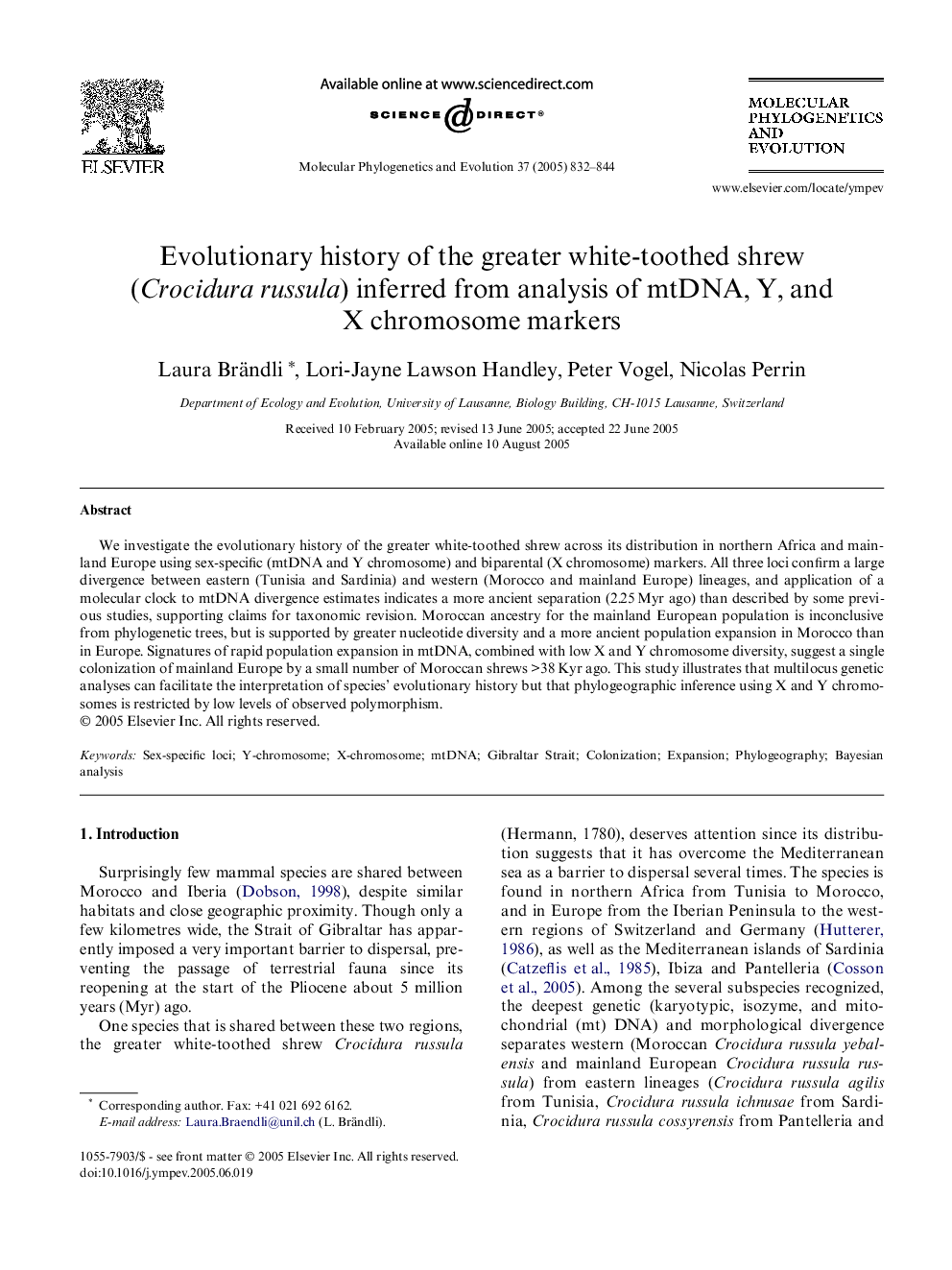| Article ID | Journal | Published Year | Pages | File Type |
|---|---|---|---|---|
| 9142965 | Molecular Phylogenetics and Evolution | 2005 | 13 Pages |
Abstract
We investigate the evolutionary history of the greater white-toothed shrew across its distribution in northern Africa and mainland Europe using sex-specific (mtDNA and Y chromosome) and biparental (X chromosome) markers. All three loci confirm a large divergence between eastern (Tunisia and Sardinia) and western (Morocco and mainland Europe) lineages, and application of a molecular clock to mtDNA divergence estimates indicates a more ancient separation (2.25Â Myr ago) than described by some previous studies, supporting claims for taxonomic revision. Moroccan ancestry for the mainland European population is inconclusive from phylogenetic trees, but is supported by greater nucleotide diversity and a more ancient population expansion in Morocco than in Europe. Signatures of rapid population expansion in mtDNA, combined with low X and Y chromosome diversity, suggest a single colonization of mainland Europe by a small number of Moroccan shrews >38Â Kyr ago. This study illustrates that multilocus genetic analyses can facilitate the interpretation of species' evolutionary history but that phylogeographic inference using X and Y chromosomes is restricted by low levels of observed polymorphism.
Keywords
Related Topics
Life Sciences
Agricultural and Biological Sciences
Ecology, Evolution, Behavior and Systematics
Authors
Laura Brändli, Lori-Jayne Lawson Handley, Peter Vogel, Nicolas Perrin,
